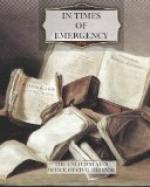In addition to water stored in containers, there is usually other water available in most homes that is drinkable, such as:
—Water and other liquids normally found in the kitchen, including ice cubes, milk, soft drinks, and fruit and vegetable juices.
—Water (20 to 60 gallons) in the hot water tank.
—Water in the flush tanks (not the bowls) of home toilets.
—Water in the pipes of your home plumbing system. In a time of nuclear attack, local authorities may instruct householders to turn off the main water valves in their homes to avoid having water drain away in case of a break and loss of pressure in the water mains. With the main valve in your house closed, all the pipes in the house would still be full of water. To use this water, turn on the faucet that is located at the highest point in your house, to let air into the system; and then draw water, as needed, from the faucet that is located at the lowest point in your house.
In a home shelter, occupants should drink first the water they know is uncontaminated, such as that mentioned above. Of course, if local authorities tell you the regular water is drinkable, it should be used.
If necessary, “suspicious” water—such as cloudy water from regular faucets or perhaps some muddy water from a nearby stream or pond—can be used after it has been purified. This is how to purify it:
1. Strain the water through a paper towel or several thicknesses of clean cloth, to remove dirt and fallout particles, if any. Or else let the water “settle” in a container for 24 hours, by which time any solid particles would have sunk to the bottom. A handful of clay soil in each gallon of water would help this settling process.
2. After the solid particles have been removed, boil the water if possible for 3 to 5 minutes, or add a water-purifying agent to it. This could be either: (a) water-purifying tablets, available at drug stores, or (b) two percent tincture of iodine, or (c) liquid chlorine household bleach, provided the label says that it contains hypochlorite as its only active ingredient. For each gallon of water, use 4 water-purifying tablets, or 12 drops of tincture of iodine, or 8 drops of liquid chlorine bleach. If the water is cloudy, these amounts should be doubled.
There would not be much danger of drinking radioactive particles in water, as they would sink quickly to the bottom of the container or stream. Very few would dissolve in the water. Although open reservoirs might contain some radioactive iodine in the first few days after an attack, this danger is considered minor except to very young children.
CARE AND USE OF FOOD SUPPLIES
Food also should be rationed carefully in a home shelter, to make it last for at least a 2-week period of shelter occupancy. Usually, half the normal intake would be adequate, except for growing children or pregnant women.




